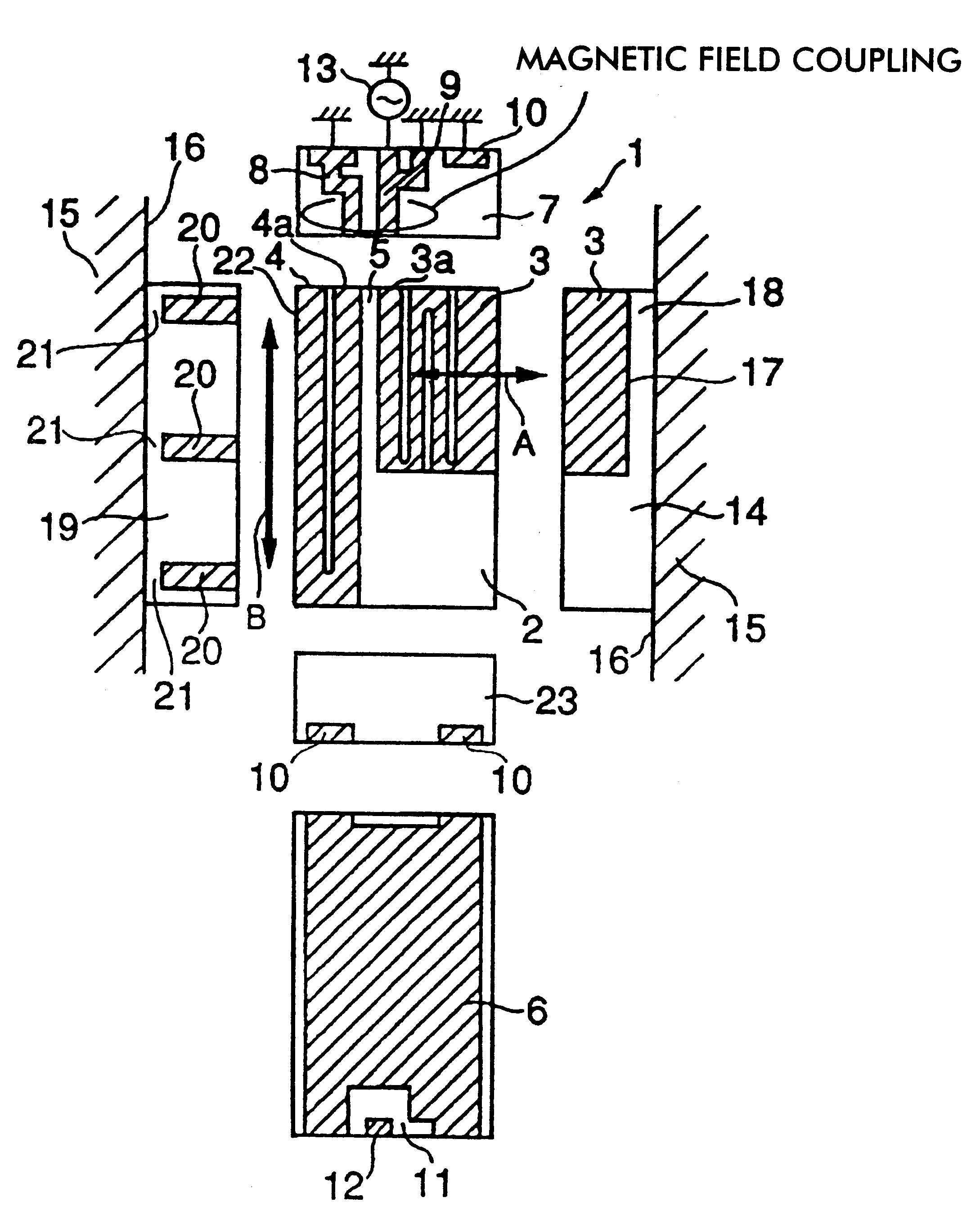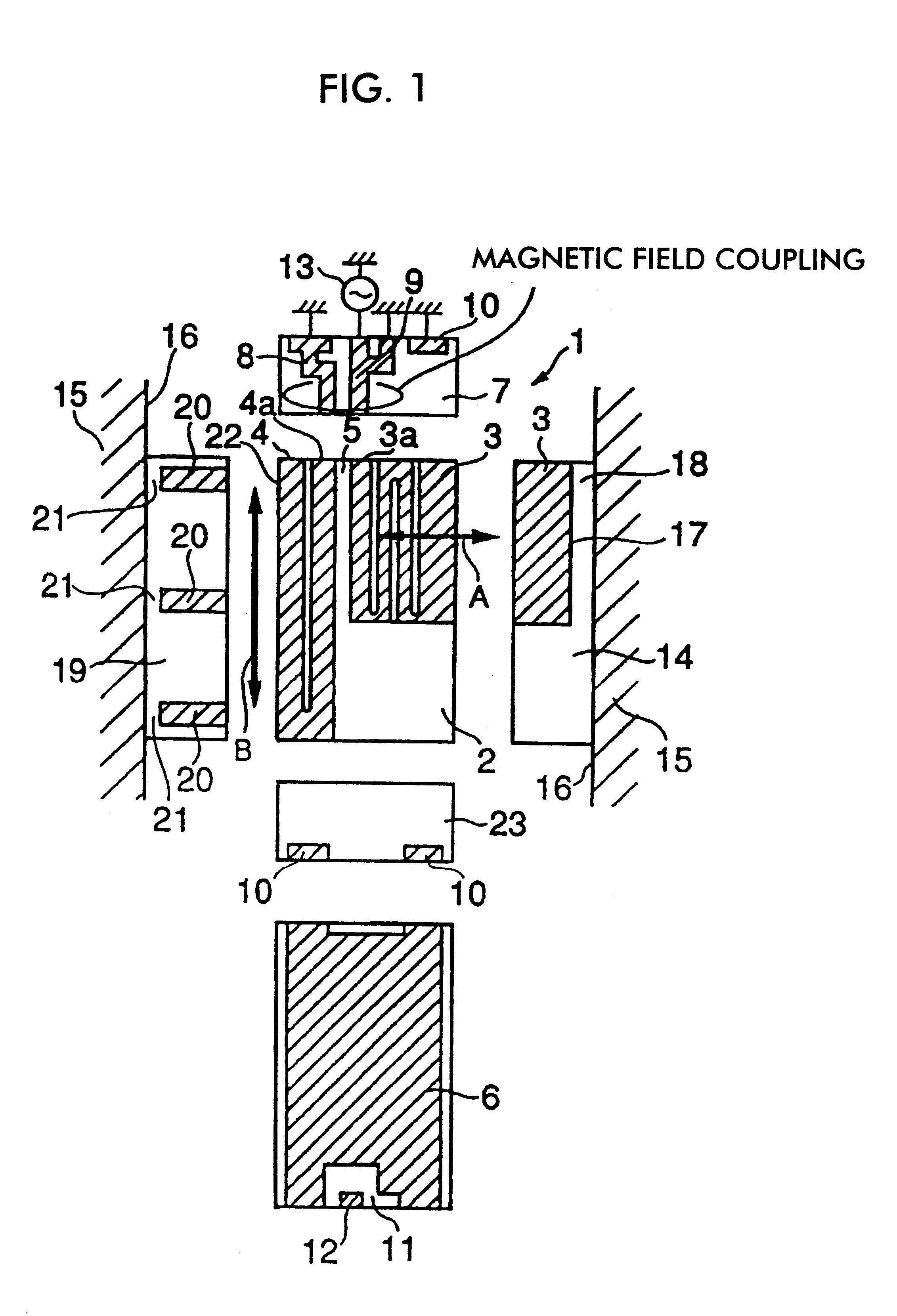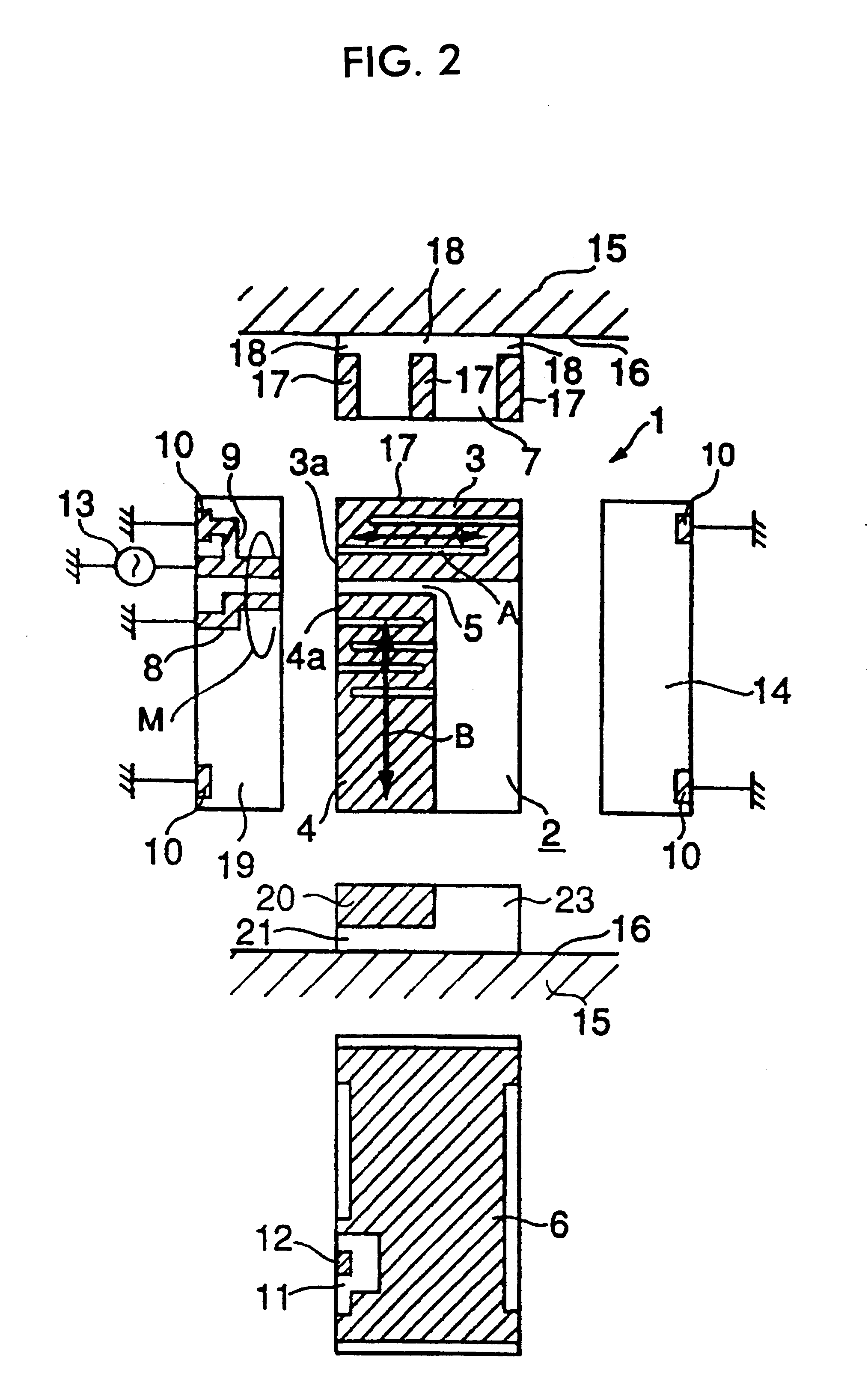Antenna device and communication apparatus using the same
a technology of communication apparatus and antenna device, which is applied in the structure of radiating elements, elongated active elements, and resonant antennas. it can solve the problems of enlarging the size of the antenna device as a whole, preventing the acquisition of desired characteristics, and affecting the success of communication apparatus downsizing,
- Summary
- Abstract
- Description
- Claims
- Application Information
AI Technical Summary
Benefits of technology
Problems solved by technology
Method used
Image
Examples
first embodiment
FIG. 1 schematically shows the configuration of the antenna device of the present invention. The 6 views in FIG. 1 schematically show the surfaces of the dielectric substrate 1 over which various electrodes are formed.
In FIG. 1 a dielectric substrate 1 is formed of such a material as ceramics, resin or the like with a high dielectric constant in the shape of a rectangular solid. On the top surface 2 of the dielectric substrate 1 are formed a feeding radiation electrode 3 and a non-feeding radiation electrode 4 in a meandering shape, respectively. The non-feeding radiation electrode 4 is formed over a quadrilateral area along a longer edge on the left-hand side of the rectangular top surface 2. The quadrilateral area extends over the whole length of the longer edge on the left-hand side of the top surface 2. The feeding radiation electrode 3 is formed over a quadrilateral area including a corner of a shorter edge on the upper right hand side of the top surface 2. The non-feeding radi...
fourth embodiment
Also, in the fourth embodiment, as the open end 17 of the feeding radiation electrode 3 is formed on the right side surface 14 of the dielectric substrate 1 and the open end (the open-end electrode 20) of the non-feeding radiation electrode 4 is formed on the rear side surface 23, the open ends of the feeding radiation electrode 3 and the non-feeding radiation electrode 4 are formed on the mutually perpendicular different sides 14 and 23. As a result, it is possible to prevent mutual signal interference between high intensity electric field portions of the feeding radiation electrode 3 and the non-feeding radiation electrode 4 substantially completely.
Also, both of the short-circuit part 8 and the short-circuit part 9 on the left side surface 19 of the dielectric substrate 1 are arranged to connect to the ground surface 16 of the mounting board 15. In the fourth embodiment, similar to the third embodiment above, a signal supplied from the signal source 13 is fed by capacitance coupl...
PUM
 Login to View More
Login to View More Abstract
Description
Claims
Application Information
 Login to View More
Login to View More - R&D
- Intellectual Property
- Life Sciences
- Materials
- Tech Scout
- Unparalleled Data Quality
- Higher Quality Content
- 60% Fewer Hallucinations
Browse by: Latest US Patents, China's latest patents, Technical Efficacy Thesaurus, Application Domain, Technology Topic, Popular Technical Reports.
© 2025 PatSnap. All rights reserved.Legal|Privacy policy|Modern Slavery Act Transparency Statement|Sitemap|About US| Contact US: help@patsnap.com



